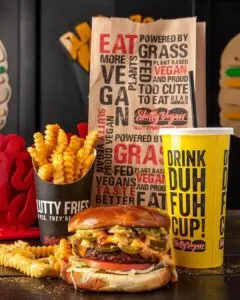Loyalty programs are everywhere. How many tags do you have on your keychain or store apps on your phone? See what I mean? From coffee shops to airlines, they promise rewards for repeated business—but are they truly a win-win for consumers and brands, or are they just cleverly designed tools to manipulate our buying behavior? To answer this, we sat down with marketing experts and consumer advocates to unpack the mechanics of loyalty programs, using real-world examples to see where they shine and where they falter.
The Case For Loyalty Programs
Marketing experts argue that loyalty programs create genuine value for both parties when designed with care. Successful programs provide customers with meaningful rewards, such as discounts, exclusive offers, or convenience perks, while giving brands valuable insights into consumer behavior.
Take Starbucks Rewards, for example. This program offers free drinks, personalized offers, and early access to seasonal items. Advocates say it’s a well-designed system that builds emotional connections by making customers feel valued while enhancing brand loyalty.
“Starbucks isn’t just selling coffee,” one expert said. “They’re selling a sense of belonging. The rewards program reinforces that connection, making it easy to justify the $5 latte because you know you’re earning something back.”
Manipulation or Motivation?
On the flip side, critics argue that some loyalty programs exploit psychological principles like loss aversion and sunk cost fallacy. Programs that require significant spending to unlock minimal rewards—or those with confusing point systems—can leave customers feeling frustrated.
One example is airline frequent flyer programs, which often promise free flights but require extensive fine print navigation to redeem points. A consumer advocate highlighted a case where a traveler spent years accumulating miles, only to discover blackout dates and hidden fees that made the reward nearly impossible to use.
“These programs can feel like a bait-and-switch,” the advocate explained. “Consumers invest time and money into earning rewards, only to find out the value isn’t as clear-cut as it seemed.”
Case Studies: Controversial Loyalty Programs
- Victoria’s Secret Angels Card
Marketed as a loyalty card, critics argue that its real aim is to lock customers into high-interest credit card debt. While cardholders earn points for purchases, the interest rates often outweigh the benefits for those who carry a balance, making it a questionable “reward.” - Amazon Prime Membership
While Prime is often touted as a loyalty program, it functions more like a subscription service. Experts question whether its benefits—like free shipping and exclusive deals—justify the cost for all customers or if it pressures them into overspending to “get their money’s worth.” - Gamified Grocery Loyalty Programs
Programs that require customers to collect stamps or points for rewards (like cookware or holiday hams) often cause controversy. Critics argue these encourage unnecessary spending on low-priority items to reach the threshold.
How to Spot a Fair Loyalty Program
To determine whether a loyalty program is genuinely rewarding or manipulative, ask these questions:
- Transparency: Are the terms clear and easy to understand?
- Accessibility: Can you redeem rewards without jumping through hoops?
- Value: Do the benefits outweigh the costs?
- Inclusivity: Is the program designed for all customers, or just high spenders?
Final Thoughts
While loyalty programs have the potential to deepen customer relationships, they’re not all created equal. Programs that prioritize transparency and meaningful rewards benefit both businesses and consumers, while those that rely on confusion or exploitation risk alienating their audience.
The next time you join a loyalty program, look beyond the shiny promises and evaluate whether it’s truly built to reward you—or just to profit from your loyalty.
What do you think? Are loyalty programs a blessing or a burden? Share your thoughts in the comments!





